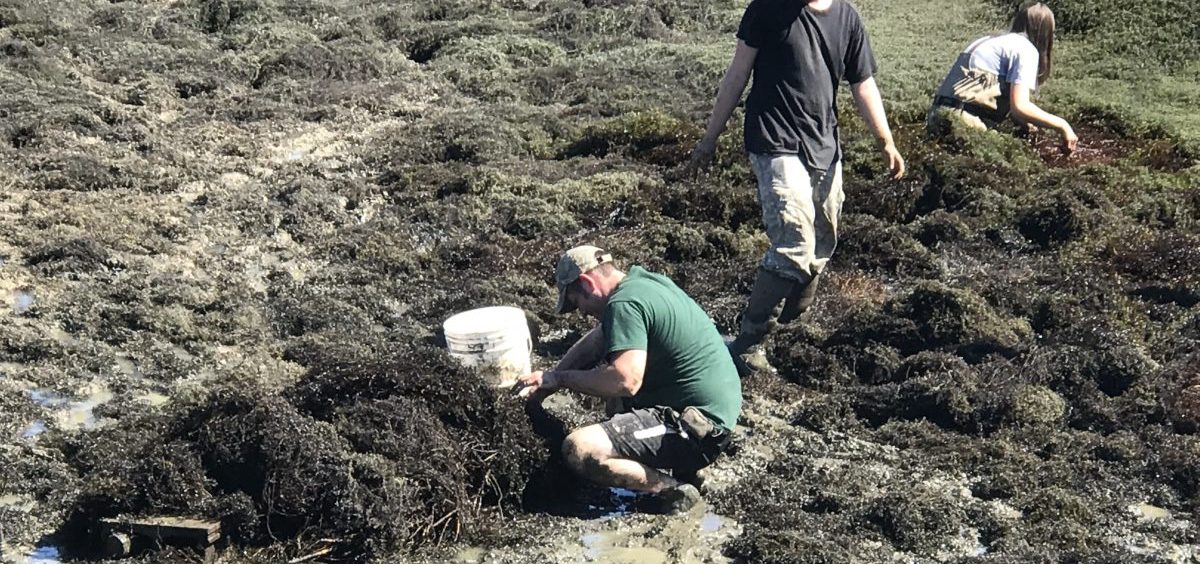
Thar’s Shrimp in Them Hills
By: Claudia Cisneros
Posted on:
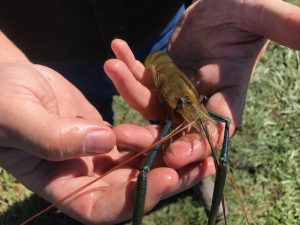
The Appalachian Mountains in Southeast Athens Ohio never ceases to surprise. Being over five thousand miles away from the Atlantic Ocean and four thousand from the Pacific, who would imagine these rugged and beautiful hills would offer some of the biggest, freshest crustaceans? But they do not come from the sea, they are freshwater shrimp – raised in Southeast Ohio.
“They look and taste the same, but are a little milder in taste than marine’s”, said Stacey Priest, a technician with the Hocking College’s Fish Management and Aquaculture program. He’s standing by one of the ponds below the lake wall at Lake Snowden, where the next batch of freshwater prawn is being harvested.
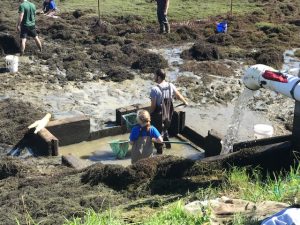
“Some of these guys are volunteers, they’re students,” Priest said. “Most of the students are first and second years students. They are in class right now.”
Lake Snowden is a 675-acre recreation park located six miles southwest of Athens and owned by Hocking College. It’s home to a variety of wildlife and the fish hatchery that serves as a learning laboratory for a Science degree students at Hocking College. During Fall season, students and staff usually harvest the shrimp and then sell them in the Athens Farmers’ Market.
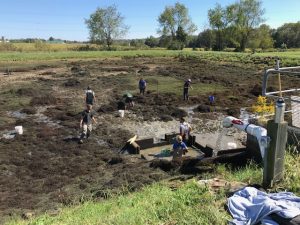
“I harvested another one-quarter acre pond last week, we got around 600 pounds out of that one. We sold 150 or so pounds last week,” he said.
These Giant Malaysian Prawns are grown in quarter-acre ponds and it will take them about 120 days to grow to maturity. By that time they will be 3 to 5 inches long. Priest expected to sell 200 pounds of prawns for 12 dollars a pound.
“They don’t have the iodine, they are not marine shrimp. Some people that are allergic to iodine can eat these guys because they don’t have that,” he said.
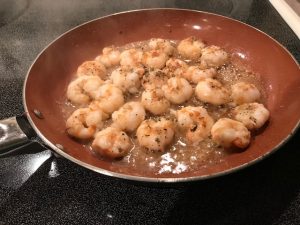
In a small town like Athens, where people value locally produced food, these shrimp are always on demand. You can find them fresh during Fall since they have a short growing season, from June to September. Growing them requires very little attention. Just about 20 to 30 minutes daily for feeding and one day of harvesting and selling.
“You can fix it any way you do shrimp. I like them in gumbo, but that’s just me,” he said. “You can fix them literally any way you want. They do take seasoning very, very well.”
They raise fast, harvest fast, and eat fast too.
Podcast:
Interview with Stacey Priest, a technician with the Hocking College’s Fish Management and Aquaculture program:

